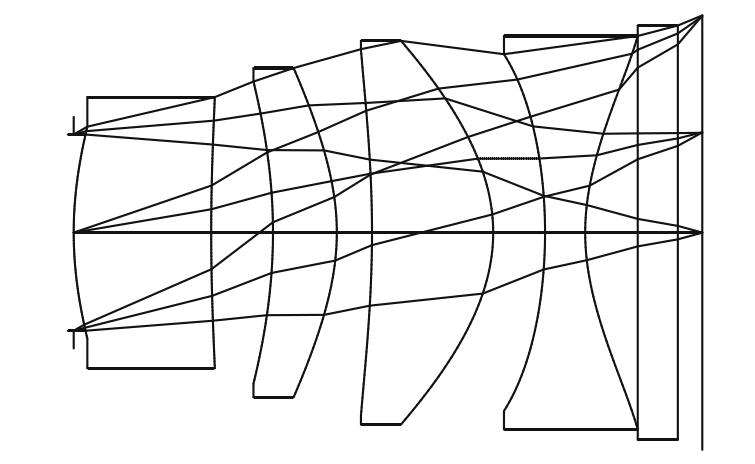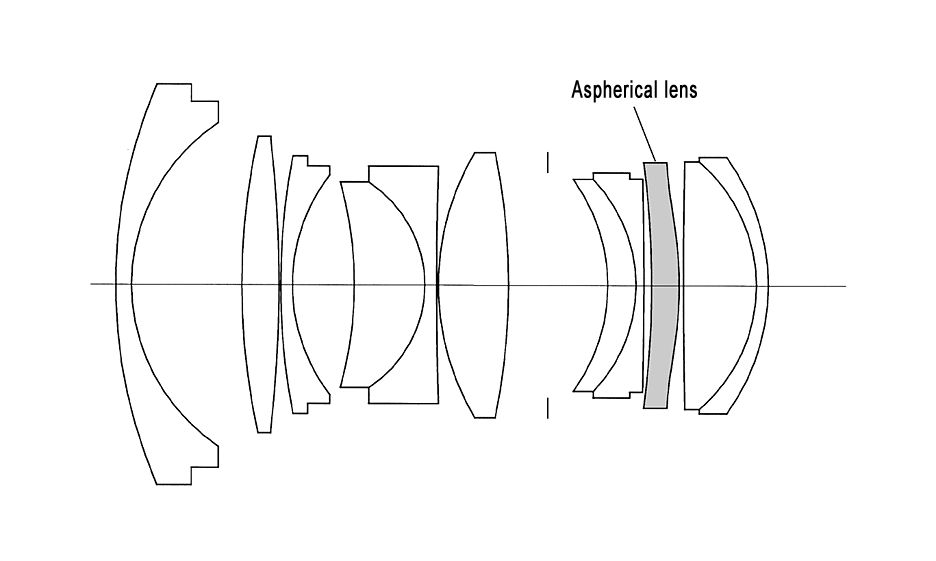The most commonly used spherical lenses in optical systems refer to lenses with rotationally symmetric spherical surfaces, meaning they maintain a constant curvature from the center to the edge. In contrast, aspheric lenses have rotationally symmetric surfaces that are not spherical, conforming to specific mathematical expressions while remaining smooth and continuous. Aspheric surfaces used in optical systems can be categorized into three major types: the first is axisymmetric aspheric surfaces, such as rotationally symmetric conic surfaces or higher-order surfaces; the second is aspheric surfaces with two planes of symmetry, like cylindrical or toroidal surfaces; and the third is freeform surfaces without any symmetry.
Aspheric lenses play a crucial role in optical systems. For instance, in widely encountered applications such as smartphone lenses, camera lenses, and ultra-short-throw projectors, these complex systems often employ a combination of multiple aspheric and spherical lenses to optimize aberration correction, without forming standardized products.

Another significant application of aspheric lenses lies in laser collimation, focusing, and laser-to-fiber coupling. The beam emitted directly from a laser is typically Gaussian, but practical applications—such as optical measurement, laser medicine, and laser processing—require laser beam shaping, including collimation, focusing, and homogenization. Conventional collimation methods using spherical lenses usually require at least two lenses.
Since lasers are monochromatic light sources, spherical aberration often hinders the achievement of diffraction-limited performance when focusing or collimating light with a single spherical lens. A single aspheric lens, however, perfectly addresses this issue by optimizing spherical aberration, making it ideal for collimating the output light of optical fibers or laser diodes, as well as coupling lasers into fibers.
Optical Components Specifications Comparison
Type | Design | Key Features | Applications |
Precision Polished Aspheric Lens | ZnSe Aspheric Lens | High transmittance in mid-IR spectrum (2.5-12μm); High refractive index (~2.4) enables shorter focal length and lower chromatic dispersion compared to other materials | Mid-infrared optical systems |
Molded Aspheric Lens | Glass Molded Aspheric Lens | Broadband AR coating (Vis-NIR/UVA); Wide NA/focal length options; High consistency in mass production with cost efficiency | High-volume optical devices |
Mounted Aspheric Lens | Threaded Mount Design | Integrated threaded housing for mechanical fixation; Adjustable positioning compared to laser collimators | Laser diode collimation, fiber coupling, beam focusing |
Infrared Laser Collimation Lens | Mid-Far IR Optimized | Large NA design for 3-5μm wavelength range; Efficient light collection for quantum cascade lasers | Infrared laser systems |
Fiber Collimator | Interchangeable Connectors | Quick-connect threading; Compatible with FCPC/FCAPC/SMA interfaces | Optical platform integration |
TPX Lens | Terahertz Optics | Large aperture (25/38mm) with long focal lengths (35‑200mm); Low absorption in THz range (0.3-3THz) | Terahertz spectroscopy/imaging |